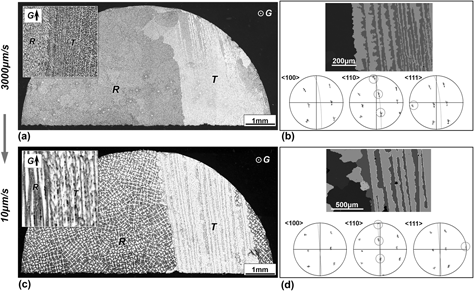Article contents
Study of growth advantage of twinned dendrites in aluminum alloys during Bridgman solidification
Published online by Cambridge University Press: 16 October 2018
Abstract

The growth advantage of twinned dendrites over regular columnar ones was systematically investigated during Bridgman solidification. An experimental approach was designed and the results indicated that the strong twin growth advantage lost its efficiency in the coexisting microstructure containing both twinned and regular dendrites at a low growth rate of 10 μm/s. The twin growth advantage derives from three essential components: the lateral twin propagation perpendicular to twin plane (Rx), the propagation parallel to twin plane (Ry), and the dendrite tip growth (Rz). The lateral extension component Rx played a vital role and would be limited at a low rate. Meanwhile, the tip undercooling of the twinned dendrite was estimated based on its plate-like growth morphology. Furthermore, the competitive growth between twinned dendrites was investigated in different feathery grains. When the included angle between twin planes was relatively large, the lateral twin propagation would keep down the in-plane twin propagation.
- Type
- Article
- Information
- Copyright
- Copyright © Materials Research Society 2018
References
REFERENCES
- 5
- Cited by




